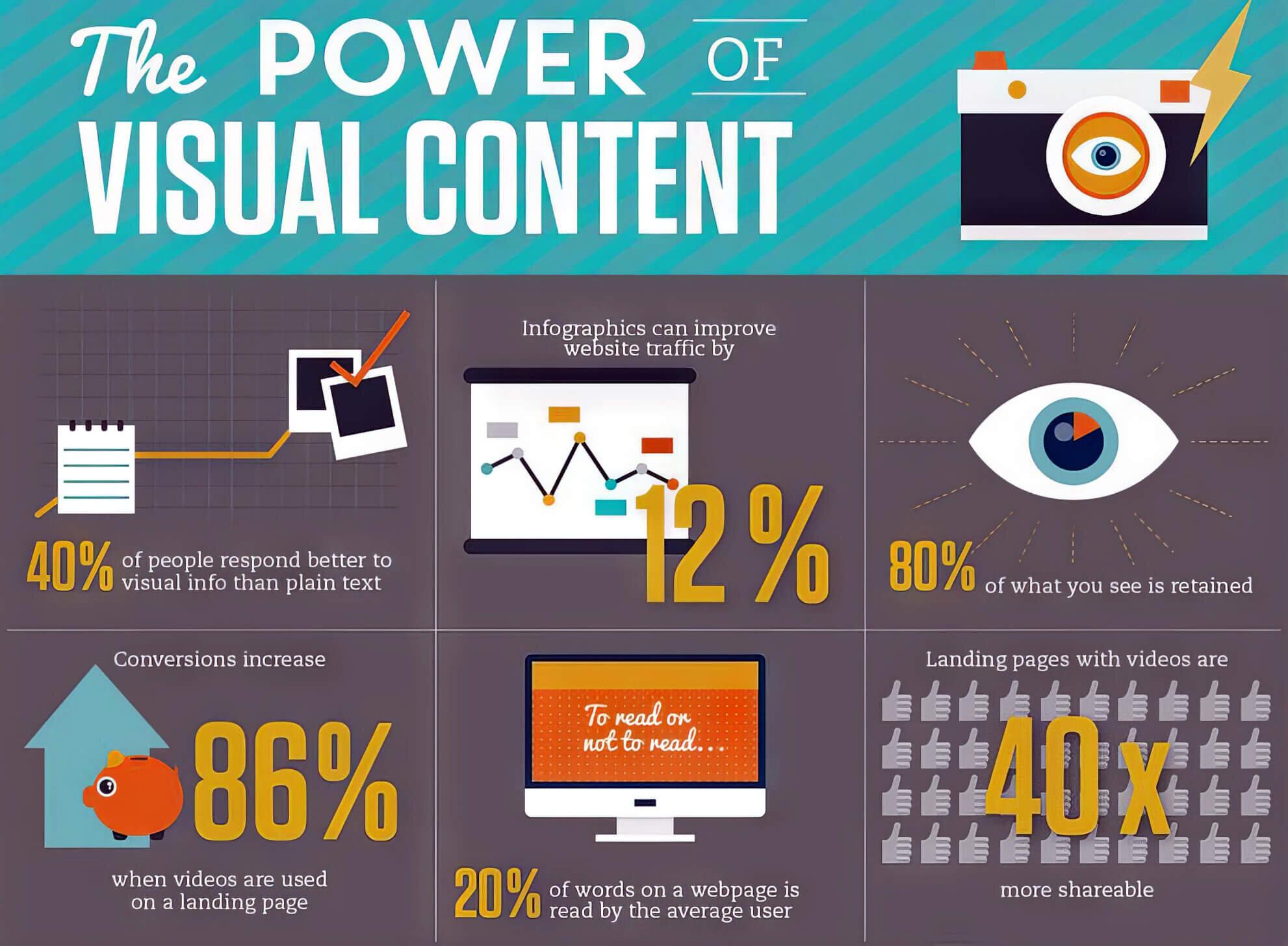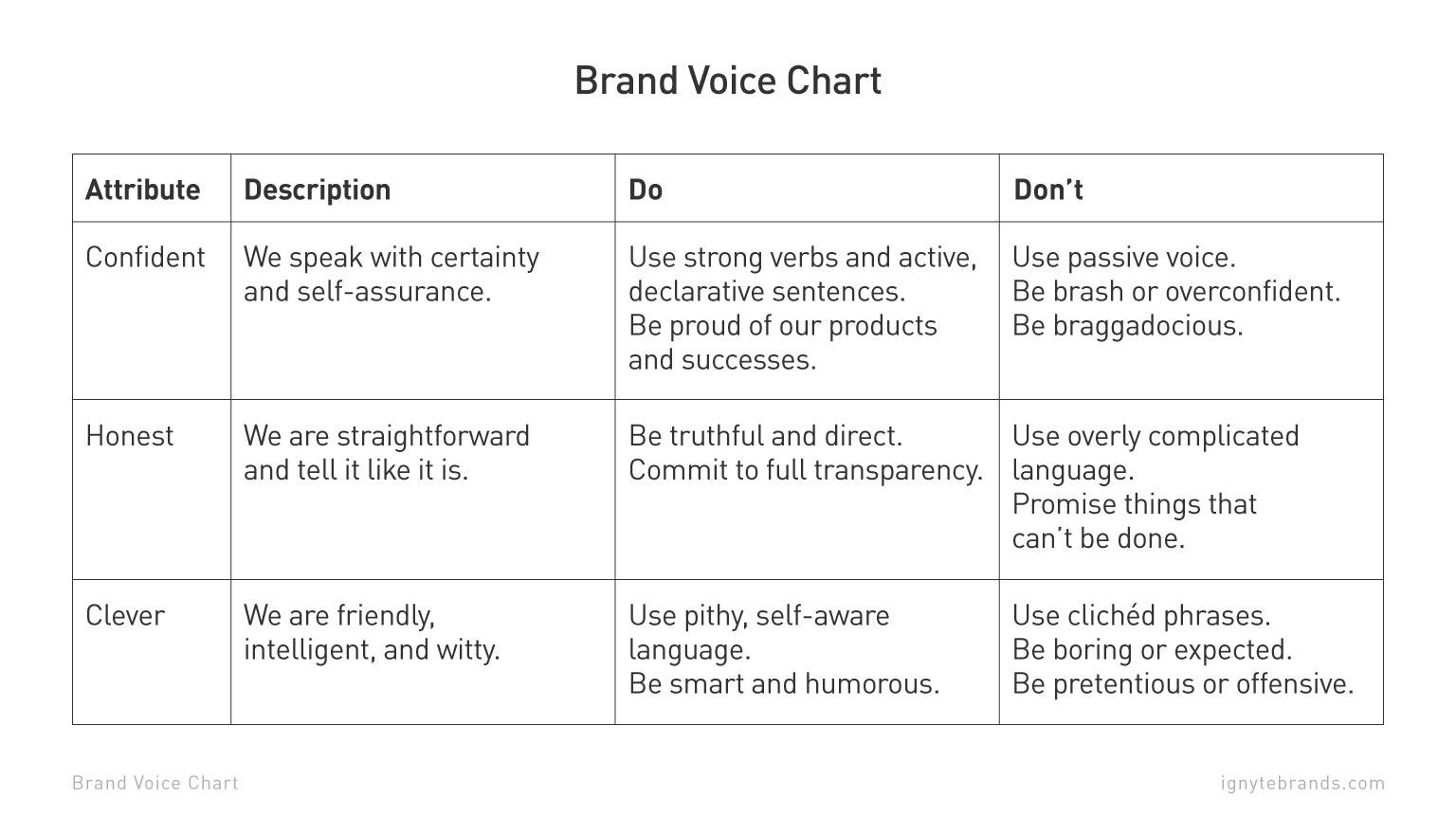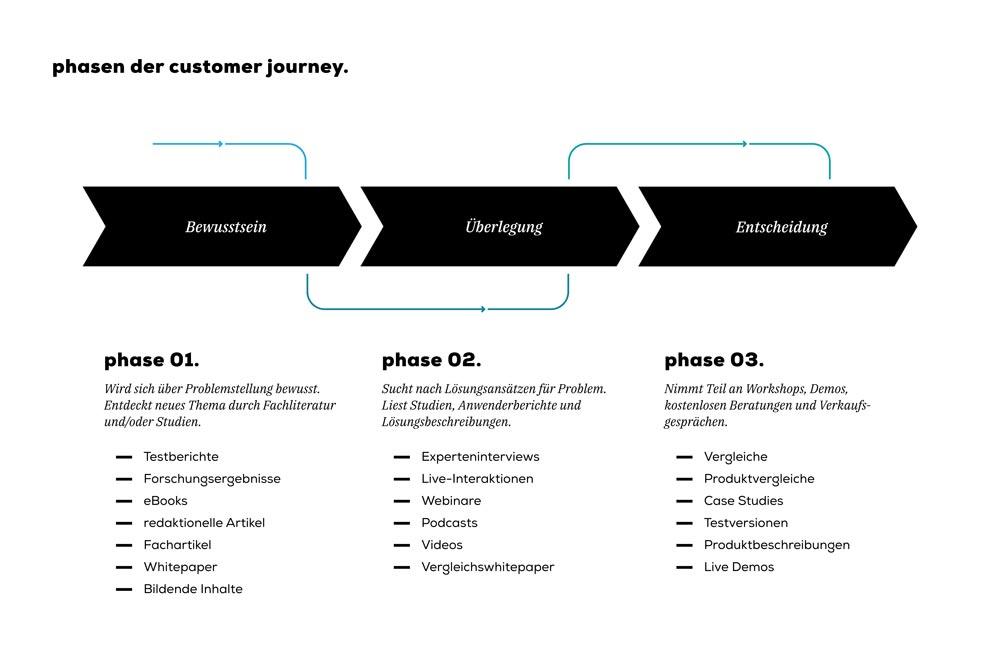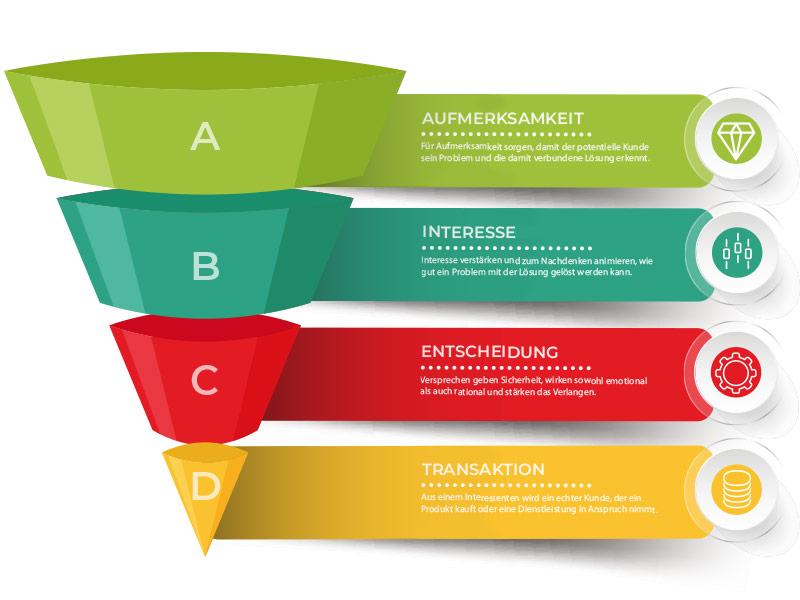Content marketing is the heartbeat of B2B SEO, driving engagement and establishing authority. By creating valuable, relevant content, businesses can attract their ideal audience, foster trust, and boost organic visibility. Embrace this powerful synergy to elevate your brand’s success!
The Role of Content Marketing in B2B SEO
In today’s digital landscape, where competition is fierce and attention spans are shorter than ever, businesses are constantly searching for innovative ways to stand out and connect with their target audience. Enter content marketing—a dynamic strategy that not only captivates but also converts. In the realm of B2B, where relationships and trust are paramount, content marketing emerges as a powerful ally in enhancing search engine optimization (SEO) efforts. It’s more than just crafting compelling articles or eye-catching infographics; it’s about weaving a narrative that resonates with industry decision-makers, addresses their pain points, and positions your brand as a thought leader.
As we delve into the intricacies of how content marketing can supercharge B2B SEO, we’ll uncover the transformative potential of high-quality content in driving organic traffic, improving search rankings, and ultimately fostering valuable connections. Embrace this opportunity to learn how strategic content can not only elevate your online presence but also propel your business to new heights. The future of B2B marketing is here, and it’s time to harness the full power of content to lead the way.
The Power of Content Marketing in Elevating B2B SEO Strategies
Content marketing serves as a formidable engine that drives B2B SEO strategies to new heights. By creating valuable and relevant content, businesses not only engage their target audiences but also enhance their search engine visibility. This dual benefit is essential in the highly competitive B2B landscape, where establishing trust and authority is paramount.
One of the primary advantages of integrating content marketing with SEO is the ability to target specific keywords that resonate with your audience. By leveraging long-tail keywords within high-quality content, companies can:
- Improve organic search rankings: Search engines reward well-researched and informative content, which can lead to higher positions in search results.
- Attract qualified leads: Content that addresses the pain points and interests of your audience ensures that the traffic driven to your site is relevant.
- Enhance user experience: Engaging and informative content keeps visitors on your site longer, reducing bounce rates and signaling search engines of the content’s quality.
Moreover, a systematic approach to content marketing can significantly boost backlink creation. High-quality content naturally attracts backlinks from other reputable sites, which is a critical factor in search engine algorithms. When other businesses and influencers reference your content, it not only drives traffic but also enhances your site’s authority, contributing to:
- Increased domain authority: A higher authority can lead to improved rankings for various keywords.
- Better brand visibility: As more people share and link to your content, your brand becomes more recognizable within your industry.
To maximize the power of content marketing in elevating SEO strategies, businesses should consider creating a diverse content portfolio that includes:
| Content Type | Purpose | SEO Benefit |
|---|---|---|
| Blog Posts | Educate and inform target audience | Keywords optimization |
| Whitepapers | Establish authority and thought leadership | Backlink generation |
| Infographics | Visual storytelling for complex data | Social shares and engagement |
| Case Studies | Showcase successful implementations | Trust-building and lead generation |
to ensure a robust impact, businesses must adopt a data-driven approach to content marketing. Utilizing analytics tools to track the performance of content can reveal insights into what resonates with the audience. This ongoing evaluation allows for:
- Content optimization: Adjusting strategies based on performance metrics to continually improve effectiveness.
- Audience understanding: Gaining deeper insights into customer behavior can inform future content topics and formats.
Creating Compelling Content that Resonates with Your Audience
In the competitive landscape of B2B marketing, creating compelling content is essential for engaging your audience and driving meaningful interactions. Content marketing is not just about producing articles and blog posts; it’s about crafting narratives that speak directly to the pain points, aspirations, and needs of your target market. This connection is what transforms mere visitors into loyal customers.
To resonate with your audience, consider the following strategies:
- Understand Your Audience: Conduct thorough research to identify their challenges, preferences, and content consumption habits. Use tools like surveys, interviews, and analytics to gather insights.
- Utilize Storytelling: Stories are a powerful way to convey messages. Share case studies or testimonials that illustrate how your product or service has positively impacted clients. This not only builds credibility but also creates an emotional connection.
- Provide Value: Your content should solve problems or fulfill needs. Infographics, whitepapers, and how-to guides can be particularly effective in offering actionable insights that your audience craves.
- Engage with Visuals: Incorporate visuals such as images, videos, and infographics. Visual content is processed faster and can significantly increase engagement rates.
- Optimize for SEO: Ensure your content is discoverable by using relevant keywords, meta descriptions, and alt tags. Well-optimized content enhances your visibility in search engines, attracting more potential leads.
When you create content that resonates, you not only foster a sense of community but also position your brand as a thought leader in your industry. By offering insightful, well-researched, and relatable content, you encourage your audience to turn to you for guidance and solutions.
Consider the following table to illustrate how different types of content can meet various audience needs:
| Content Type | Audience Need Addressed | Benefit |
|---|---|---|
| Blog Posts | Awareness and Education | Builds trust and authority |
| Whitepapers | In-depth Understanding | Position as industry thought leader |
| Webinars | Real-Time Engagement | Fosters direct interaction |
| Infographics | Quick Information Processing | Enhances shareability and retention |
Ultimately, the key to successful B2B content marketing lies in your ability to create content that is not only informative but also engaging and valuable. This approach not only drives traffic and improves SEO but also nurtures relationships, encouraging potential clients to choose your brand over the competition.
Understanding Your Audience: The Foundation of Effective Content
To achieve success in B2B SEO, understanding your audience is paramount. The effectiveness of your content hinges on how well you know the pain points, preferences, and behaviors of the businesses you aim to attract. A tailored approach will not only resonate more deeply but also foster trust and engagement, which are critical in the B2B landscape.
Start by developing detailed buyer personas. Consider the following elements when crafting these profiles:
- Demographics: Age, gender, job title, and industry.
- Goals: What objectives do they aim to achieve?
- Pain Points: Identify the challenges they face in their industry.
- Content Preferences: What type of content do they consume (blogs, whitepapers, videos)?
Once you have a clear understanding of your audience, you can create targeted content that addresses their specific needs. This is where strategic keyword integration plays a significant role. Use tools like Google Keyword Planner or SEMrush to discover the terms your audience is searching for. Prioritize long-tail keywords that reflect their unique challenges and interests. These keywords should seamlessly blend into your content, enhancing its relevance and discoverability.
Utilizing analytics tools can further refine your understanding. Track metrics such as:
| Metric | Importance |
|---|---|
| Traffic Sources | Identify where your audience is coming from. |
| Engagement Rates | Measure how your audience interacts with your content. |
| Bounce Rates | Understand how quickly they leave your site. |
By analyzing these metrics, you can adjust your strategy to better meet the needs of your audience. For instance, if you notice high bounce rates on certain pages, it may indicate that the content is not aligning with what your audience expects or needs.
fostering two-way communication is essential. Engage with your audience through comments, social media, and surveys. Asking for feedback not only strengthens your connection but also provides invaluable insights into their evolving preferences. This ongoing dialogue can guide the continuous refinement of your content strategy, ensuring it remains aligned with your audience’s needs and interests.

Harnessing the Synergy Between SEO and Content Marketing
In the competitive landscape of B2B, the integration of SEO and content marketing is not merely beneficial; it’s essential. When executed effectively, this synergy can lead to significant improvements in brand visibility, lead generation, and customer engagement. By aligning keywords with high-quality content, businesses can enhance their search engine rankings while providing value to their target audience.
Here’s how these two elements work together:
- Keyword Optimization: Identifying the right keywords is crucial. Content marketing provides the platform to incorporate these keywords naturally, ensuring that your content ranks well without sacrificing readability.
- Value-Driven Content: Content that educates, informs, and solves problems is more likely to be shared. This sharing leads to backlinks, which are a critical factor in SEO. The more high-quality backlinks you acquire, the higher your rankings will be.
- User Engagement: Engaging content keeps visitors on your site longer, reducing bounce rates. This behavioral factor influences search engine algorithms positively, further enhancing your SEO efforts.
- Authority Building: Consistently publishing authoritative content positions your brand as a thought leader in your industry. This not only increases trust among potential clients but also boosts your SEO rankings.
To illustrate the effectiveness of this synergy, consider the following table which highlights common types of content and their SEO benefits:
| Content Type | SEO Benefit |
|---|---|
| Blog Posts | Regular updates improve crawl frequency and keyword targeting. |
| Infographics | Highly shareable, leading to more backlinks. |
| White Papers | Establish authority and generate leads through gated content. |
| Case Studies | Showcase success stories, attracting organic traffic and improving credibility. |
Moreover, leveraging analytics tools can provide insights into how your content is performing in terms of SEO. Tracking metrics such as organic traffic, bounce rates, and user engagement can help refine your strategies. By continuously analyzing this data, you can adapt your content marketing efforts to better meet the needs of your audience while simultaneously enhancing your SEO strategy.
Ultimately, the interplay between SEO and content marketing is a powerful driver of growth for B2B companies. By recognizing the importance of this integration and committing to a collaborative approach, businesses can unlock new opportunities for visibility, engagement, and success in an ever-evolving digital landscape.

Building Authority and Trust through Quality Content
In the realm of B2B SEO, establishing authority and trust is paramount. Quality content serves as the cornerstone for achieving this, creating a pathway for businesses to resonate with their target audience. By consistently delivering insightful and valuable information, companies can position themselves as thought leaders in their industry.
Engaging content not only captivates readers but also fosters a sense of reliability. When businesses provide solutions to real problems, they nurture a relationship with their audience built on credibility. This trust is earned through:
- Consistent posting: Regular updates indicate that a business is active and engaged.
- In-depth research: Well-researched articles demonstrate a commitment to quality.
- Unique perspectives: Offering fresh insights helps distinguish a brand from its competitors.
Moreover, content that addresses the pain points of potential clients can drive engagement. By understanding and articulating the challenges faced by their audience, businesses can tailor their content to offer practical solutions. This approach not only enhances authority but also encourages dialogue, inviting feedback and interaction.
Creating valuable resources, such as whitepapers, case studies, and how-to guides, can significantly elevate a brand’s standing in its niche. These types of content not only provide depth but also serve as lead magnets, attracting potential customers and gathering valuable data. Consider the following table that outlines effective types of content for B2B SEO:
| Type of Content | Benefits |
|---|---|
| Blog Posts | Boost SEO, engage audience, establish expertise. |
| Whitepapers | Generate leads, offer in-depth analysis, demonstrate authority. |
| Case Studies | Showcase success, build credibility, illustrate experience. |
| Webinars | Interact with audience, share knowledge, build community. |
In addition to creating high-quality content, leveraging social proof can amplify trust. Sharing testimonials, reviews, and user-generated content not only validates a brand’s claims but also enhances its reputation. When potential clients see others benefiting from a service or product, they are more likely to engage.
optimizing content for search engines is crucial. Quality content that is not easily discoverable will miss its mark. Incorporating relevant keywords, meta tags, and alt text ensures that the content reaches the intended audience. This holistic approach to content marketing not only builds authority but also solidifies a brand’s position as a trusted resource.

Utilizing Keywords Wisely: The Art of Strategic Content Creation
In the competitive landscape of B2B marketing, the ability to harness the power of keywords can make all the difference in creating compelling content that resonates with your audience. Strategic content creation involves not just sprinkling keywords throughout your content but understanding their context, relevance, and potential to engage your target market. By doing so, you can elevate your SEO efforts while providing valuable insights that position your brand as an industry thought leader.
To effectively utilize keywords, consider the following approaches:
- Research and Relevance: Begin with extensive keyword research to identify terms and phrases that your potential clients are actively searching for. Use tools like Google Keyword Planner or SEMrush to uncover high-volume, low-competition keywords that align with your content goals.
- Incorporate Naturally: Avoid the temptation to cram keywords into your content. Instead, focus on incorporating them naturally within engaging narratives. This practice not only enhances readability but also improves your chances of ranking higher in search results.
- Contextual Usage: Consider the intent behind each keyword. Are users seeking information, solutions, or products? Tailor your content to address these queries directly, ensuring that your keywords are used in a context that satisfies the user’s needs.
Moreover, keyword optimization extends beyond the written content. Ensure that your meta titles, descriptions, and headers are optimized as well. These elements play a crucial role in how search engines interpret your content and can significantly influence click-through rates. Below is a simple guidelines table for optimizing different content elements:
| Element | Best Practices |
|---|---|
| Meta Title | Include primary keyword within the first 60 characters. |
| Meta Description | Summarize content engagingly, include secondary keywords. |
| Header Tags | Use H1 for titles and H2/H3 for subheadings with keywords. |
Link building is another vital aspect of leveraging keywords within your content. Establishing internal links to other relevant pieces on your site not only aids in SEO but also guides readers through their journey. Furthermore, external links to reputable sources can enhance your credibility while providing a richer experience for your audience. This interconnectedness not only improves dwell time but also boosts the chances of your content being shared across platforms.
the art of strategic content creation lies in your ability to weave keywords into narratives that resonate with your audience’s needs while bolstering your SEO. Keep the focus on providing value, and remember that with every piece of content you create, you are building a bridge between your brand and your potential customers. Embrace this opportunity with creativity and insight, and you will pave the way for effective B2B marketing success.

Maximizing Engagement with Visual and Interactive Content
In today’s crowded digital landscape, capturing your audience’s attention is more crucial than ever. Visual and interactive content can transform your B2B SEO strategy by creating memorable experiences that resonate deeply with your target market. When designed thoughtfully, such content not only enhances user engagement but also boosts your search engine rankings.
Visual elements, such as infographics, images, and videos, convey complex information quickly and effectively. They make your content more digestible, allowing your audience to grasp key messages at a glance. Incorporating high-quality visuals into your blog posts and articles can lead to:
- Increased shareability: Engaging visuals are more likely to be shared across social media platforms, expanding your reach.
- Improved retention: Viewers tend to remember information presented visually better than text alone.
- Enhanced credibility: Professional-quality images and graphics can elevate your brand’s authority.
Moreover, incorporating interactive elements like quizzes, polls, and sliders can significantly elevate user engagement. These tools encourage active participation, making visitors feel more connected to your content. For instance, a well-placed quiz can help users identify their needs while simultaneously gathering valuable insights about their preferences. Consider the following advantages of interactive content:
- Higher engagement rates: Users are more likely to spend time on pages that offer interactive experiences.
- Better data collection: Engaging tools can provide you with insights into your audience’s behavior and preferences.
- Increased conversions: Interactive content can guide users through the buyer’s journey, nudging them toward making a decision.
To illustrate the effectiveness of combining visual and interactive content, consider the following comparison of standard content vs. enriched content:
| Content Type | Engagement Level | SEO Impact |
|---|---|---|
| Standard Blog Post | Moderate | Basic |
| Visual Infographic | High | Enhanced |
| Interactive Quiz | Very High | Significant |
By embracing these innovative formats, you can create a dynamic content strategy that not only attracts but also maintains user interest. In the B2B sector, where decision-making processes can be lengthy, providing your audience with engaging content is essential to keep them informed and invested in your brand. As you rethink your B2B content marketing approach, remember that visually appealing and interactive elements are not just trends; they are powerful tools that can redefine your engagement metrics and drive long-term success.

Crafting a Consistent Brand Voice Across All Platforms
In the realm of B2B marketing, establishing a cohesive brand voice is vital for fostering trust and engagement. A consistent tone not only reflects your company’s personality but also creates a recognizable identity across various platforms. Whether it’s your website, social media profiles, or email campaigns, every interaction should resonate with your core message and values.
To achieve this consistency, consider the following strategies:
- Define Your Brand Voice: Take the time to articulate the characteristics of your voice. Is it friendly and approachable, or formal and authoritative? Document these traits to guide your content creation.
- Use Consistent Language: Choose specific terms and phrases that align with your brand identity. This includes industry jargon that resonates with your audience while remaining accessible.
- Visual Consistency: Your brand voice isn’t just about words; it’s also about how you present your content visually. Use consistent colors, fonts, and imagery that reflect your brand’s ethos.
- Tailor Content to Each Platform: While maintaining a consistent voice, adapt your content to suit the unique characteristics of each platform. A LinkedIn article may require a more professional tone compared to a tweet or an Instagram post.
Moreover, utilizing a content calendar can help streamline your messaging and ensure uniformity across all channels. This tool allows you to plan topics, set deadlines, and allocate resources efficiently, ensuring that every piece of content aligns with your overarching narrative.
| Platform | Voice Characteristics | Content Type |
|---|---|---|
| Website | Professional, Informative | Blogs, Case Studies |
| Professional, Insightful | Articles, Updates | |
| Concise, Engaging | Updates, Polls | |
| Creative, Visual | Images, Stories |
Lastly, feedback is essential. Regularly solicit input from your audience to understand how your messaging resonates. Engage with their comments and adapt your brand voice as needed. This responsiveness not only enhances your credibility but also builds a deeper connection with your target audience.

Leveraging Social Media to Amplify Your Content Reach
In today’s digital landscape, simply creating high-quality content is not enough. To truly maximize your reach and impact, it’s essential to strategically leverage social media channels to promote and distribute your content. By harnessing the power of platforms like LinkedIn, Twitter, and Facebook, you can effectively amplify your message, engage with your target audience, and enhance your visibility in the crowded B2B space.
One of the most effective ways to use social media for content amplification is through targeted sharing. Tailor your posts to resonate with specific segments of your audience. Create variations of your content that address the unique challenges faced by different industries or roles. For example, a blog post on SEO strategies can be rephrased to appeal to marketing managers, IT specialists, or C-suite executives.
Visual content plays a crucial role in grabbing attention on social media. Incorporating eye-catching graphics, infographics, and videos can significantly boost engagement rates. According to studies, visuals are processed 60,000 times faster than text, making them a powerful tool for conveying your message quickly and effectively. Don’t hesitate to repurpose your blog posts into visually appealing formats to reach a wider audience.
Engagement is key. Encourage your followers to engage with your content by asking thought-provoking questions, running polls, or sparking discussions. This fosters a sense of community and helps to build relationships with potential clients. Here are some ways to boost engagement:
- Share industry insights and ask for opinions.
- Host live Q&A sessions to discuss your content.
- Celebrate milestones and share user-generated content.
Additionally, consider collaborating with influencers or industry leaders who have a robust social media presence. A well-timed shout-out or co-created content can significantly increase your reach and credibility. This not only introduces your content to new audiences but also positions your brand as a thought leader in your sector.
Lastly, don’t forget to track your social media metrics. Analyze which types of content and platforms yield the best results. This data is invaluable in refining your strategy and ensuring that your content continues to reach and resonate with the right audience.

Analyzing Performance: Metrics that Matter in B2B Content Marketing
Understanding which metrics to monitor in B2B content marketing is crucial for driving impactful strategies that lead to measurable success. By focusing on the right indicators, businesses can assess the effectiveness of their content and optimize their approach to maximize ROI.
Website Traffic: The volume of visitors landing on your site is a fundamental metric. Monitoring traffic sources helps you understand where your audience is coming from. An increase in organic traffic indicates that your SEO and content marketing strategies are resonating with your target audience.
Engagement Metrics: Metrics such as average time spent on page, bounce rate, and pages per session provide insight into how users interact with your content. High engagement levels signal that your content is not only relevant but also compelling enough to keep your audience interested.
Lead Generation: The ultimate goal of B2B content marketing is often to generate leads. Tracking conversions from your content—such as eBooks, webinars, or newsletters—can reveal which topics and formats are most effective at driving potential customers to take action. Consider measuring:
- Number of leads generated per content piece
- Conversion rates from CTAs
- Cost per lead
Social Media Shares: The extent to which your content is shared on social media platforms can amplify its reach and visibility. High share counts not only enhance brand awareness but also contribute to SEO success by increasing backlinks and referral traffic.
Search Engine Rankings: Monitoring your content’s performance in search engine results pages (SERPs) is critical. A strong ranking for targeted keywords can significantly enhance visibility and drive organic traffic. Tools like Google Analytics and SEMrush can be instrumental in analyzing your positions over time.
Customer Feedback: gathering qualitative data through surveys and feedback can provide deeper insights into how your content is perceived. Understanding your audience’s needs and preferences helps tailor future content to better serve them, fostering stronger relationships and loyalty.
By focusing on these key metrics, B2B marketers can effectively measure the performance of their content marketing efforts, refine their strategies, and achieve sustainable growth in an ever-evolving digital landscape.

Adapting to Trends: Staying Ahead in the Evolving Digital Landscape
In today’s dynamic digital environment, content marketing serves as a powerful tool in driving B2B SEO success. Businesses need to recognize that effective content does more than just attract visitors; it engages, informs, and converts potential leads into loyal customers. By creating high-quality, relevant content, companies can establish authority and trust, which are essential in the B2B landscape.
One of the key strategies is to focus on buyer personas. Understanding the specific needs and pain points of your target audience enables you to craft content that resonates deeply. This could involve:
- Creating detailed case studies that showcase your solutions.
- Offering whitepapers that provide in-depth insights into industry challenges.
- Developing informative blog posts that address common queries.
Moreover, integrating SEO best practices into your content marketing strategy is crucial. By optimizing your content for relevant keywords, you can enhance its visibility on search engines. Consider the following aspects of SEO:
- Keyword Research: Identify the terms your audience is searching for.
- On-page Optimization: Ensure titles, headers, and meta descriptions are aligned with SEO goals.
- Link Building: Foster relationships with other industry players to gain backlinks.
| Content Type | SEO Benefit |
|---|---|
| Blogs | Boosts organic traffic through targeted keywords |
| Infographics | Enhances engagement and shareability |
| Videos | Increases dwell time and reduces bounce rate |
In addition to SEO, utilizing data analytics can significantly enhance your content marketing efforts. By monitoring performance metrics such as page views, engagement rates, and conversion rates, businesses can refine their strategies. This ongoing analysis helps in understanding what works, allowing for adjustments that can lead to improved outcomes.
Lastly, fostering a culture of adaptability within your content marketing team is essential. As digital trends evolve, so should your approach to content creation. Encourage innovation, experimentation, and continuous learning to ensure your strategies remain relevant and effective in reaching your B2B audience.

Incorporating User Experience into Your Content Strategy
Creating content that resonates with your audience goes beyond just delivering information; it requires a deep understanding of user experience (UX). When your content strategy incorporates UX principles, you not only attract visitors but also foster engagement and loyalty. A seamless integration of valuable content with intuitive design can significantly enhance the effectiveness of your B2B SEO efforts.
To begin, consider the user journey. Mapping out the various stages your audience goes through—from awareness to consideration to decision—is crucial. Each stage should be supported by relevant content that addresses specific needs or questions. This not only guides users through their journey but also improves your site’s SEO by creating a natural flow of keywords and phrases that resonate with search intent.
Another essential element is the readability of your content. If your audience struggles to digest the information, they are likely to abandon your page quickly, resulting in high bounce rates. Employ the following tactics to enhance readability:
- Use short paragraphs.
- Incorporate bullet points and lists for easier scanning.
- Utilize subheadings to break up sections.
- Include visuals such as infographics or images to complement text.
Moreover, interactive elements such as surveys, quizzes, or infographics can keep users engaged while providing valuable insights into their preferences. This feedback loop is vital for refining your content strategy, ensuring that it remains aligned with user needs and expectations. By actively involving your audience, you create a sense of community and enhance the overall experience.
Furthermore, optimizing for mobile devices is no longer optional. With an increasing number of users accessing content through smartphones and tablets, ensuring that your site is mobile-responsive can significantly impact user satisfaction and retention. A responsive design enhances navigation and accessibility, making it easier for users to engage with your content wherever they are.
To illustrate the importance of UX in your strategy, consider the following table that compares traditional content strategies with those that incorporate UX principles:
| Traditional Content Strategy | User Experience-Focused Strategy |
|---|---|
| Keyword stuffing | Natural keyword integration |
| Long, dense paragraphs | Concise, engaging formats |
| Static content | Interactive and dynamic elements |
| Poor mobile optimization | Fully responsive design |
By embracing user experience in your content strategy, you not only improve your SEO rankings but also build a more committed audience. Ultimately, when users find value and ease in your content, they are more likely to return, share, and convert, turning casual visitors into loyal clients.

Nurturing Leads with Targeted Content Marketing Campaigns
In the realm of B2B SEO, nurturing leads through targeted content marketing campaigns is not just a strategy; it’s an essential practice that ensures businesses stay relevant and engaged with their audience. By crafting tailored content that speaks directly to the needs and pain points of potential clients, companies can transform casual interest into meaningful connections.
Creating buyer personas is the first step in developing a targeted approach. Understanding who your audience is allows you to create content that resonates. Consider the following when sketching out your personas:
- Industry: What industry do they belong to?
- Role: What is their position within the company?
- Challenges: What specific challenges do they face?
- Goals: What are their professional aspirations?
Once you have detailed personas, the next step is to create a content calendar that aligns with their buying journey. This involves mapping out content types that will guide leads from awareness to decision-making. Here’s a simple structure to follow:
| Stage | Content Type | Purpose |
|---|---|---|
| Aware | Blog Posts | Educate on industry trends |
| Consideration | White Papers | Provide in-depth analyses |
| Decision | Case Studies | Show proven results |
Utilizing multiple formats—such as videos, infographics, and podcasts—can also enhance engagement. Each format serves as a unique touchpoint to capture attention and convey complex information in digestible ways. Visual storytelling can significantly improve retention and understanding, making your content more impactful.
don’t underestimate the power of nurture emails. They allow you to stay connected with leads who may not be ready to convert immediately. By delivering personalized content directly to their inbox, you can keep your brand top of mind while providing continuous value. Remember, the goal is to build trust and authority over time.
a well-executed content marketing campaign not only nurtures leads but can also significantly enhance your SEO efforts. Quality content increases dwell time, reduces bounce rates, and encourages backlinks, all of which play a critical role in improving search engine rankings. By focusing on targeted content, you’re not just nurturing leads; you’re laying the groundwork for long-term business success.

The Future of B2B SEO: Embracing Innovative Content Strategies
In an ever-evolving digital landscape, B2B companies must adapt their SEO strategies to include innovative content marketing techniques. The future of B2B SEO is not just about optimizing for search engines; it’s about creating valuable content that resonates with target audiences. Businesses that embrace this paradigm shift will not only improve their online visibility but also foster deeper connections with potential clients.
A key component of this strategy is the utilization of data-driven insights. Analyzing customer behavior and preferences can unlock new avenues for content creation. By leveraging analytics tools, companies can identify trending topics and align their content with the interests of their audience. This approach ensures that the content is not just informative but also engaging, thus increasing the chances of conversion.
- Interactive content: Quizzes, calculators, and infographics can significantly enhance user engagement.
- Personalization: Tailoring content to meet specific needs of different industry sectors can make a substantial impact.
- Video content: Producing educational or promotional videos can convey complex information quickly and effectively.
Moreover, collaboration with industry influencers can amplify reach and credibility. By partnering with thought leaders, B2B companies can tap into established audiences, drive traffic, and build trust. This not only boosts SEO but also positions the brand as a reputable authority within its niche.
Table-driven content can also play a vital role in B2B SEO. Here’s a simple breakdown of how different types of content can impact SEO performance:
| Content Type | SEO Benefits | Engagement Value |
|---|---|---|
| Blog Posts | Improved keyword ranking | High |
| Whitepapers | Lead generation | Medium |
| Case Studies | Build trust | High |
| Videos | Increased dwell time | Very High |
As the B2B landscape progresses, companies must also focus on voice search optimization. With the rise of digital assistants, ensuring that content is voice-search friendly can enhance discoverability. This involves using natural language, answering common questions, and incorporating long-tail keywords that reflect how people speak.
continuous evaluation and adaptation of content strategies will be essential. The most successful B2B companies will be those that remain agile, responding quickly to changes in the market and consumer behavior. By staying ahead of trends and embracing innovative content strategies, businesses can secure their position in the competitive B2B landscape.
Frequently Asked Questions (FAQ)
Q&A: The Role of Content Marketing in B2B SEO
Q1: Why is content marketing essential for B2B SEO?
A1: Content marketing is the backbone of effective B2B SEO strategies. It establishes your brand as an authority in your industry, builds trust among potential clients, and enhances organic visibility. By creating valuable, informative content that resonates with your target audience, you not only improve your search engine rankings but also foster meaningful relationships that lead to conversions. Think of content marketing as a bridge that connects your expertise to the needs of your audience.
Q2: How does quality content impact search engine rankings?
A2: Quality content plays a pivotal role in enhancing search engine rankings. Search engines prioritize high-quality, relevant content that answers users’ queries. By producing well-researched articles, case studies, and whitepapers, you provide search engines with the signals they need to determine your site’s authority. This, in turn, leads to higher visibility in search results, driving more organic traffic to your site. Remember, when you focus on quality, the rankings follow.
Q3: What types of content should B2B companies focus on for SEO?
A3: B2B companies should harness a variety of content types to maximize their SEO efforts. Blog posts that address industry challenges, detailed guides that offer solutions, engaging videos, and infographics that simplify complex information are all effective. Furthermore, case studies and testimonials can showcase your success stories, building credibility. Diversifying your content not only caters to different learning styles but also broadens your reach and engagement.
Q4: How often should B2B companies publish new content for optimal SEO results?
A4: Consistency is key in content marketing for SEO. While there’s no one-size-fits-all answer, aim to publish high-quality content regularly—be it weekly, bi-weekly, or monthly. The focus should not be solely on quantity but rather on delivering value with every piece. By establishing a content calendar and adhering to it, you can ensure that your audience remains engaged and your site remains relevant in search rankings.
Q5: Can content marketing improve lead generation for B2B companies?
A5: Absolutely! Effective content marketing serves as a powerful lead-generation tool. By providing valuable insights and solutions that resonate with your target audience, you can capture leads through gated content, such as eBooks or webinars. Moreover, informative blog posts can nurture leads through the sales funnel by addressing their pain points and showcasing your expertise. Ultimately, content marketing not only attracts leads but also converts them into loyal customers.
Q6: How can B2B companies measure the success of their content marketing efforts?
A6: Measuring success in content marketing involves analyzing key metrics such as organic traffic, bounce rates, time spent on page, and conversion rates. Tools like Google Analytics can provide insights into how well your content is performing. Additionally, monitoring social shares and engagement can indicate how much value your content provides. By continually assessing these metrics, you can refine your strategy, ensuring that your content remains relevant and impactful.
Q7: What is the future of content marketing in B2B SEO?
A7: The future of content marketing in B2B SEO is bright and filled with potential. As businesses increasingly recognize the importance of storytelling, personalization, and video content, those who adapt will thrive. Furthermore, with advances in AI and data analytics, content can be tailored more precisely to meet the needs of your audience. Embrace these changes and innovate continuously—this is your path to establishing a robust online presence and achieving long-term success.
Closing: Content marketing is not just an option; it is a necessity in the B2B landscape. By leveraging the power of valuable content, you can enhance your SEO, build trust, and create lasting relationships that drive business success. Embrace this journey, and watch your brand soar to new heights!
To Conclude
the synergy between content marketing and B2B SEO is not just a strategic advantage; it’s a transformative approach that can redefine the way businesses connect with their audiences. As we’ve explored, high-quality, relevant content serves as the backbone of effective SEO, driving organic traffic and establishing your brand as an authority in your industry.
Embracing this powerful relationship means investing in creativity and insight—crafting content that not only informs but inspires and engages. It’s about delivering value at every touchpoint, nurturing relationships, and guiding potential clients through their journey with expertise and empathy.
Now is the time to harness the full potential of content marketing in your B2B SEO strategy. Let your words resonate, your ideas amplify, and your brand story unfold in ways that captivate and convert. Remember, in the world of B2B, it’s not just about visibility; it’s about building trust and forging connections that last.
So take the leap—commit to a content-driven SEO strategy that not only elevates your online presence but also transforms the way you engage with your market. The future of your business depends on it, and the possibilities are boundless.





